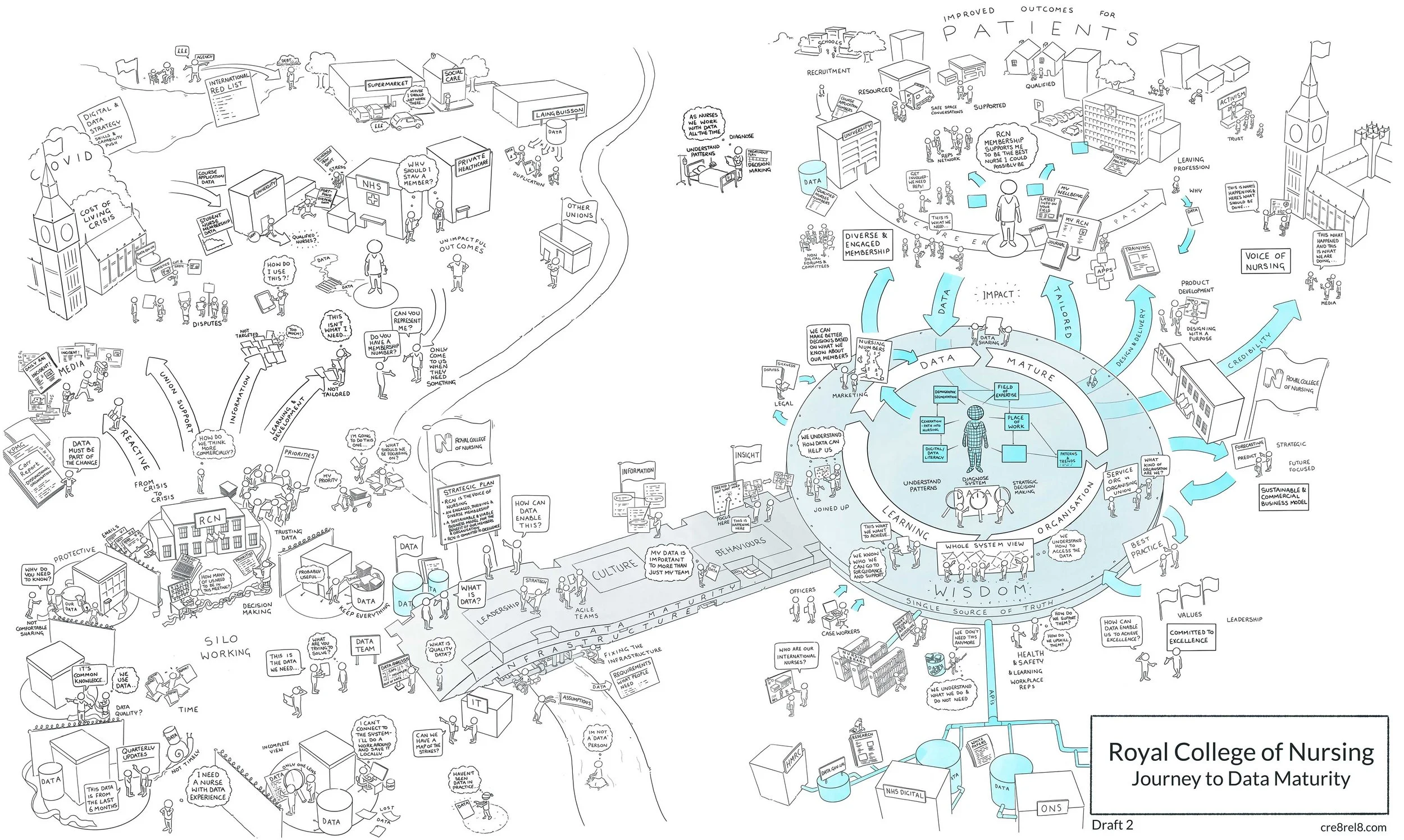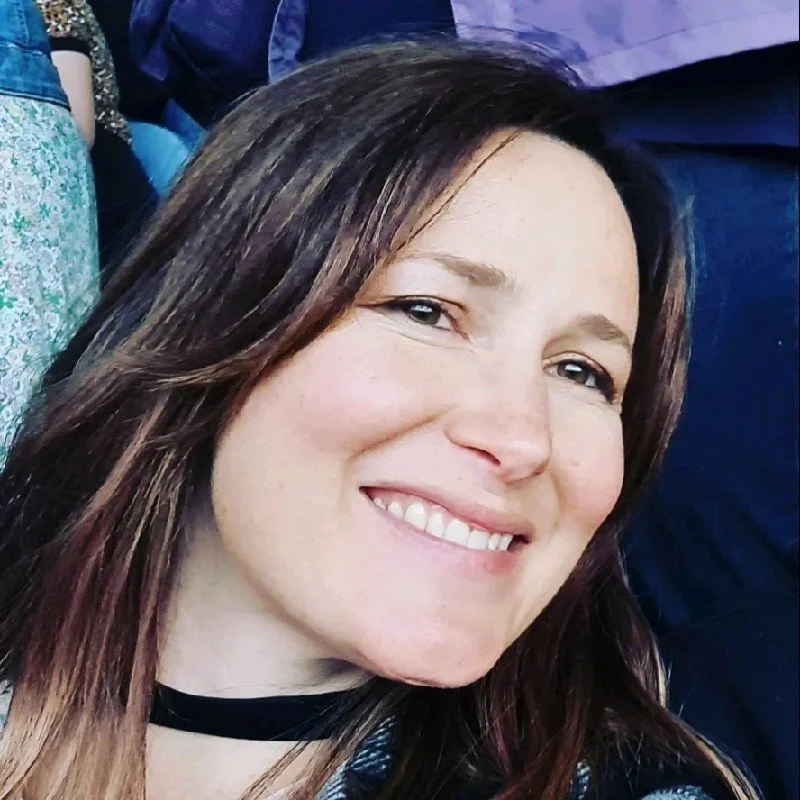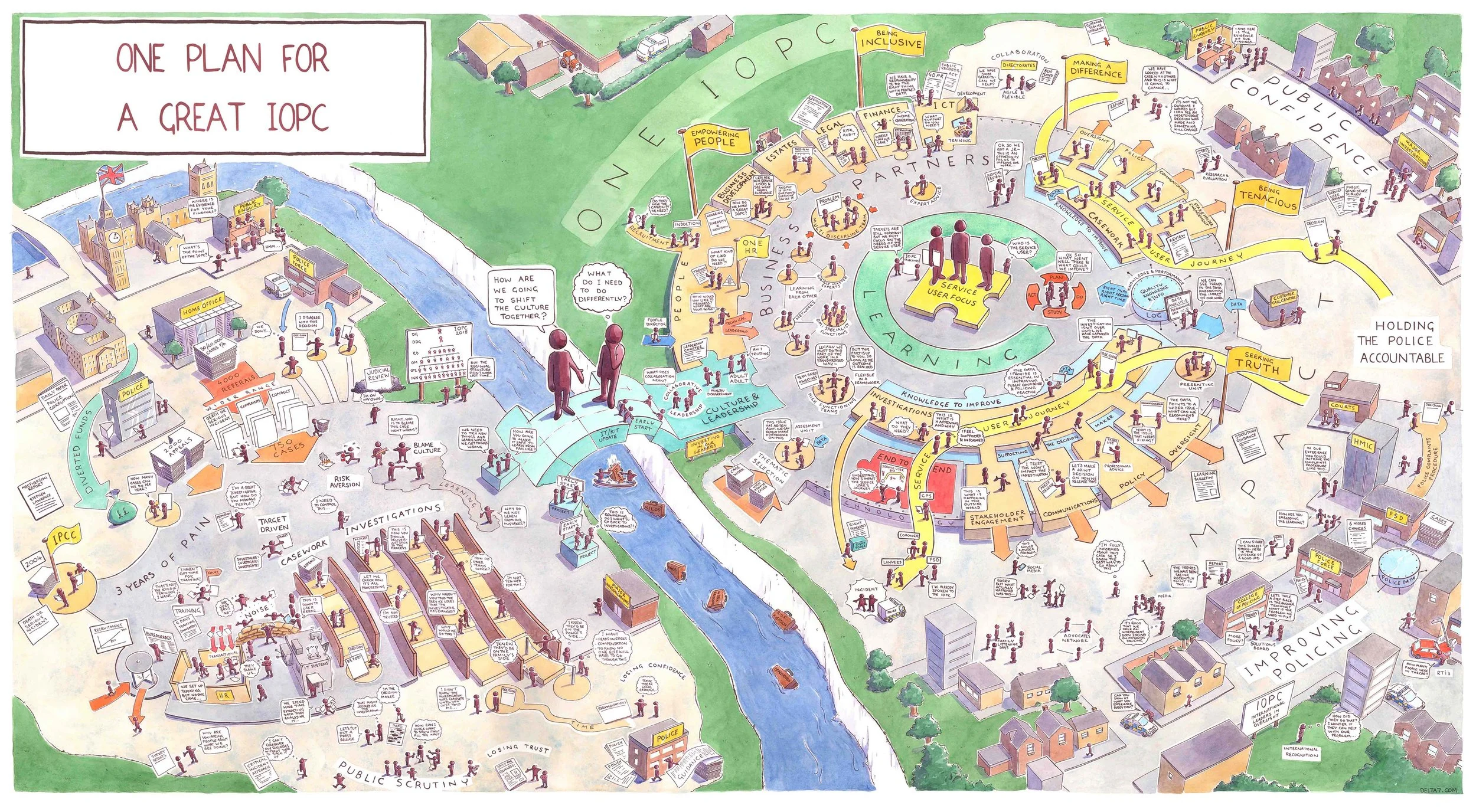Katy Gooblar - HO Data and Analytics, DLA
“Data strategy is a tricky, technical subject, even boring for some. But it doesn't have to be. With a creative collaboration it was possible to enthuse, engage and even excite a 100-year old organisation onto a data maturity journey through a reimagining of how the story of strategy is told. This is the data strategy initiation story of the Royal College of Nursing (RCN).”
Storytelling makes complexity accessible to all. Together with illustrations, it is possible to bring fun to serious matters and enable people to see their contributions and recognise themselves and their small part in the big picture. But more than that it brings about a cohesive 'togetherness' of where the RCN are today, where they wanted to get to; the goals, aspirations and vision, and introduces practical actions, decisions, and challenges along the route to getting there. This was more than a 20+ page of words, but a living conversation starter for now and the future.
171 people, through 35 workshops collaborated to create the initial collage of individual stories and experiences of working with data and what could be done differently. A further 200 people experienced the stories via organic conversation. An enormous and unheard of staff engagement with embedding the principle of data strategy, setting the foundations for collective ownership and accountability. Furthermore, it was a mechanism that convinced many to overcome their taught fear, that data, statistics, and maths are something to fear or that 'we are not good at'. This created an opportunity to alter behaviour and positively influence culture, which in turn instilled a best practice to employee engagement, inclusion, knowledge growth and innovation. With so many advocates, it diverted the narrative away from something a small group of people were responsible for (the data team) to shared awareness, understanding and ownership of its success.
Beyond the satisfaction of staff feeling heard and listened to, it provided the Head of Data and Analytics the ability to dig deeper into the surface challenges facing an organisation starting out on transformative change. They were able to go on to explore root cause analysis in an entirely different way, to understand challenges in operational process, inefficiencies and duplication of effort. With the ability to centre this around a point in the story and ask probing questions of "tell me more about this... "how does this look in your department?" which removed barriers to conversation and collaboration. Ultimately this has led to process improvement at local levels, within teams, for example collaboration between the data team and marketing team to work on counts needed regularly. The data team could see the goal marketing wanted to achieve and the pain points experienced (in pictorial form) and were able to prioritise specific work streams to enhance their stakeholder experience. Both teams are able to add more value to the collective goal of the RCN.
Furthermore, presenting strategy conversationally with illustration enabled people to be more honest, to discuss gaps between the future state and today. This became practical actions for a backlog. With this tangible examples of what needed to happen were presented in a business case to enhance the capability of the data and analytics function. This was agreed by the board and in the same year enacted. The existence of the team will create a ripple effect across the business and change the history from this point, embracing transformative change, improves data quality, analytical capability and the readiness for AI adoption in a 100-year old Royal College. Without it, it is anticipated the adoption of data strategy and ergo maturity, would have gone like so many other organisation, a tick box of been done, with many plasters over cracks and costly digital tools, going unused and staff lacking confidence in how to embrace change and gain confidence in the digital world of work.
Rebecca Herbert - People Experience Specialist
“The ‘One Plan picture’ is a visual tool we have used to help create the One Plan and our narrative. We didn’t start out intending to use the picture for the whole organisation. That decision came after we demonstrated how successful it was as an engagement tool.”
The concept was first used in the Operations Directorate as part of our plan to achieve ‘operational excellence’. The level of engagement across Operations was high and the candid responses from staff helped to uncover the barriers getting in the way of our transition. The feedback from the first round of sessions with Operations staff using the ‘big picture’ surfaced the challenges and opportunities arising from the impending changes to the organisation (governance and legislation changes) and highlighted cultural issues - blame culture, risk aversion, target driven (rather than quality), inconsistent messaging. These were organisational issues, not just issues affecting Operations.
Chris and Eli facilitated 12 stakeholder interviews (with Heads of functions and Management Board members), 10 employee engagement sessions (between 10-14 delegates/session) and 4 feedback sessions to Senior Leaders in order to create the picture which captures our employee experience and our strategic vision for the future. Each time we hosted a session with a group of staff the picture would evolve to reflect the staff experience. Collectively, this provided a unique perspective of the whole organisation, surfacing the common experiences, the barriers and opportunities that will help us become a great IOPC. The process of creating also shaped, challenged and refined our thinking. In developing the narrative that was translated into the picture – we were also developing the narrative for the One Plan. This helped us to reflect employee voice in the creation of our mission statement, priorities and more recently, our Values.
Cre8rel8 also trained 12 Story tellers to use the picture as part of our engagement approach – e.g. in developing the Values. We also now have the ability to run future in-house sessions to further develop our story telling capability – a key feature in our ongoing engagement with staff to engage them in future change. We used our 12 trained story tellers to facilitate the engagement conversations with our staff using the One Plan picture in order to create our Values. Using the picture, our story tellers facilitated the Values sessions (42 sessions across each office.) By investing in our internal staff and using the ‘One Plan’ picture, we were able to run the Values conversations in house rather than procuring an additional external provider. This story teller capability will be used as part of our ongoing engagement activity with staff. Already, we are using the picture as part of the ongoing Knowledge Café sessions, in Directorate Away Days and as part of our internal communications. This is a product that will be used repeatedly so the return on investment will be realised over the next 3 ½ years.
Whilst we do have a product in the ‘One Plan picture’ – I would emphasise the purpose of creating the picture was to open up the dialogue between staff and the business to ensure that employee voice is present in our revised strategic plan. The One Plan picture is a tool to drive engagement and the resulting picture is a reflection of all the conversations that we had across the business. The quality of those conversations helped to shape a common understanding and direct our energy into setting the direction to become an organisation that is a great place to work and where people can reach their potential. The picture merely reflects those conversations.




